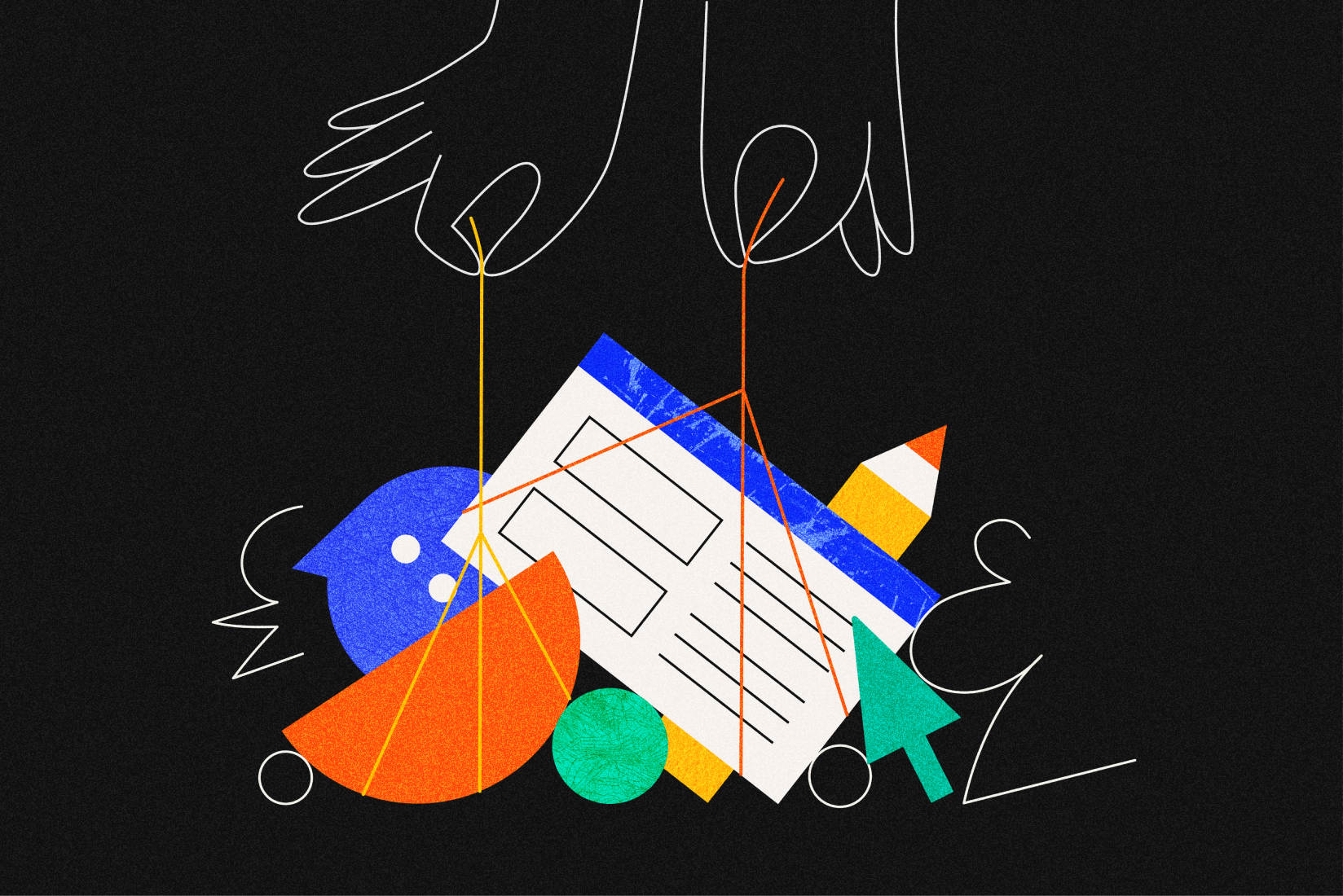Finding the right monetization strategy for your startup
Every business — startup or SMB or enterprise giant — strives to maximize its profits. But how do you do it as a brand new founder? The key lies in finding the right monetization for your business model.

We’ve already talked about how to choose the business model for your business, now it’s time to dig deeper and focus on startup monetization strategies with a new guide from our product manager Evgeniy Sergeiev.
What does monetization mean
Simply put, monetization is all about getting income from something whether it's selling goods or showing advertisements on your website. Don’t forget that monetization is only a part of the business model that you’ve chosen, but it’s one of the most important 🤑
According to Alexander Osterwalder, the Swiss business theorist, to find a new business model or reshape the existing one, you can use the business model canvas that contains nine blocks of activities.
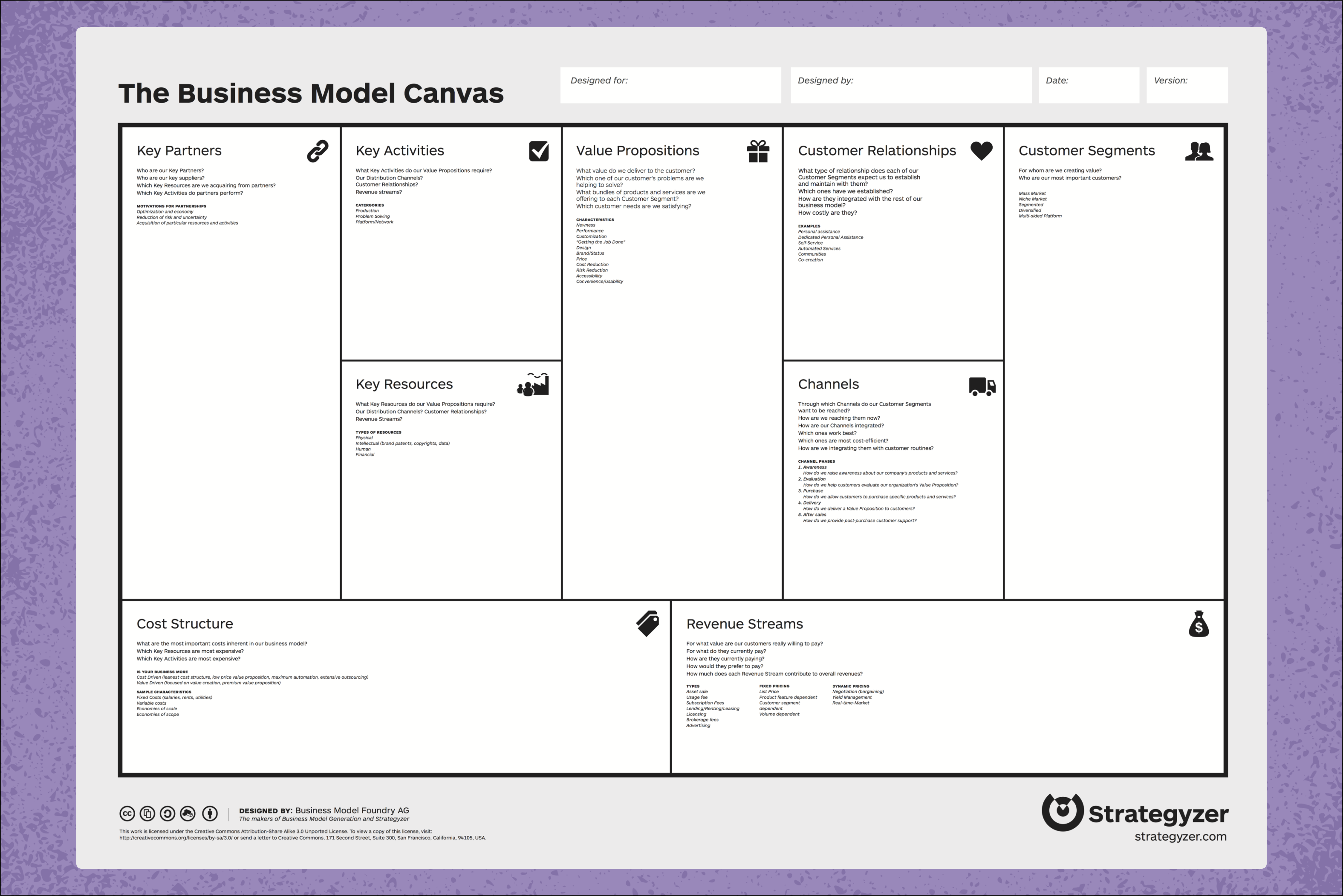
Osterwalder’s template shows the key elements of each business model — every block is connected to another. If there is a problem in one block, other blocks suffer too and we need to change things accordingly.
If you look at the template you’ll see that monetization lies in the Revenue streams block.
Monetization isn’t everything
Let’s compare the business model to breakfast. Imagine you’re having eggs with ham and cheese for breakfast, each piece of your food goes well with the others and suits the taste of the general audience too.
Now if you add sushi to it, you might still enjoy it, but will it be the same for a general audience?
If you've got something rotten, the breakfast won’t please anyone.
The same goes for business models. When all the parts fit perfectly together, the business is working and you’ve got a steady flow of income. Otherwise, you’re doing something wrong.”
Sometimes the problem may be with monetization and how you are selling your strange breakfast to the audience, but not always.
The problem may be in other blocks of the business model, like selling your products on the wrong channels or showing the value incorrectly.
Still, it’s always wise to test various monetization options to find the one that suits your product the best.
Don’t also forget that one business model can combine various types of monetization and only you can find out which one is better for your product.
Combining monetization types
The most basic types of monetization are:
- Selling — basic eCommerce monetization;
- Subscribing — giving a subscription to daily, weekly, monthly, and yearly access to a product;
- Showing ads.
The list can be complemented with some other not-so-common types.
Sometimes monetization types can be combined to achieve better results. For example, Facebook goes for showing ads to monetize its business. On the other hand, it also provides the companies with some data about their users to find the right segment for their ads.
In the article about business models and product metrics, we discussed three basic types of business models: online store, media and free/freemium app or SaaS.
Now let’s show which monetization types go well with each business model.
Online store or eCommerce monetization
This model is typical for selling some goods to the customers and the difference in price goes into your profit bucket. The scenario usually goes like this: you buy or produce for 3, sell for 5, and get 2 left.
For such a business model you must build your monetization around two things — value and trust.
To define value is simple, just find out what benefit the customer will get from your business. In most cases, it is just the product.
Trust is a bit harder to get. You need to convince your customer that it’s you exactly who can deliver the product to them on time and in the right condition. Then the customer can pay in parts, upfront or with other options you choose without any fear of fraud.
To get monetization right, you need to look into each of these parts of your selling process:
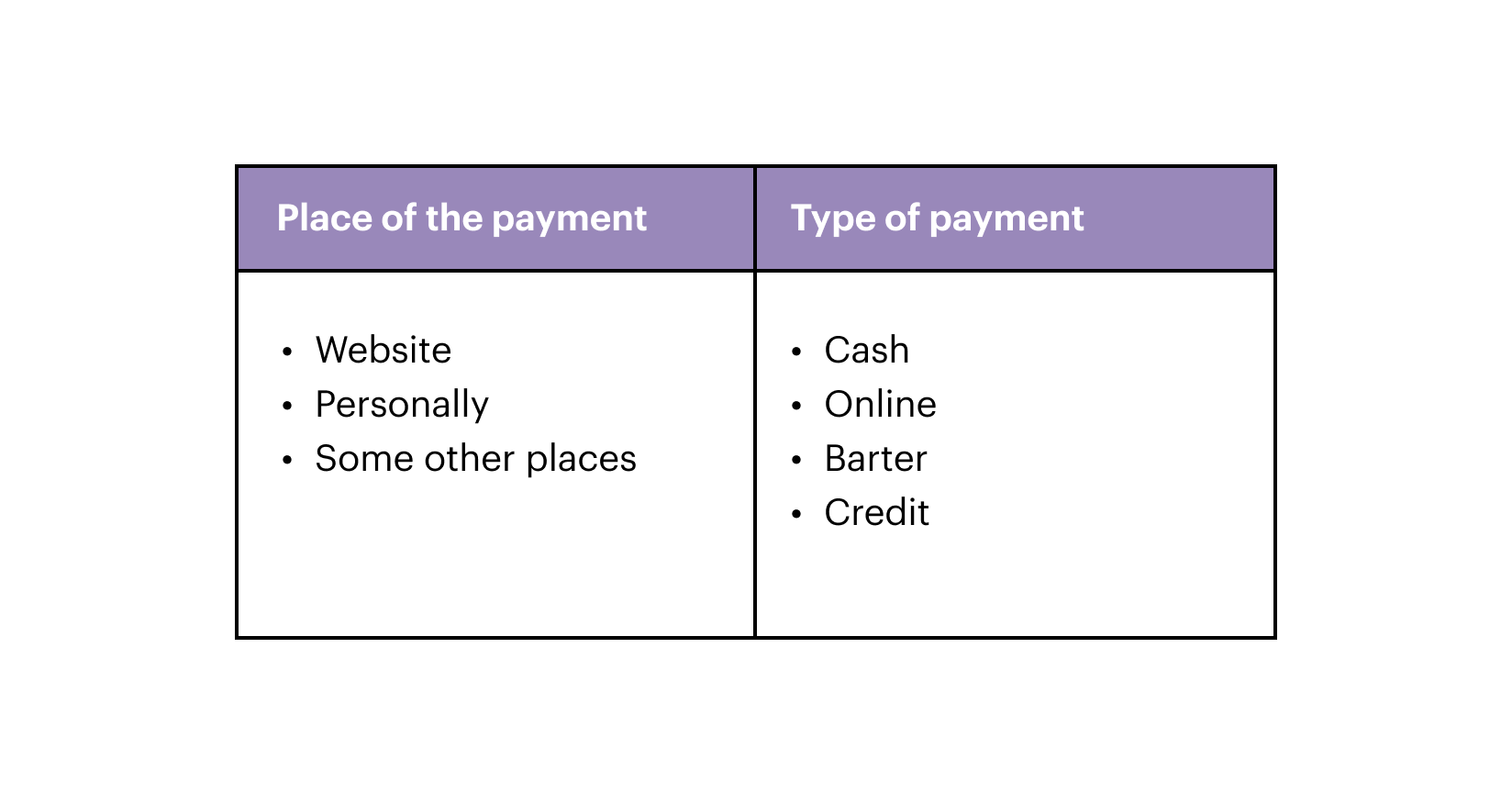
There are more things to consider, but the aspects mentioned above are a must to think through beforehand.
Media business model monetization
There are two typical scenarios for this model:
- Attract users for 4, show something free plus some advertising, and sell advertising for 5 — the media is free, but you can show ads from other companies.
- Attract for 4, show bits of something valuable, and give full access for 6 — such media have a paywall and users need to pay for full access.
Sometimes we can add donation as a type of business model, but it’s less frequent, so let’s focus on the two main types. Free media usually goes for the ads, while paid media use subscription monetization more frequently.
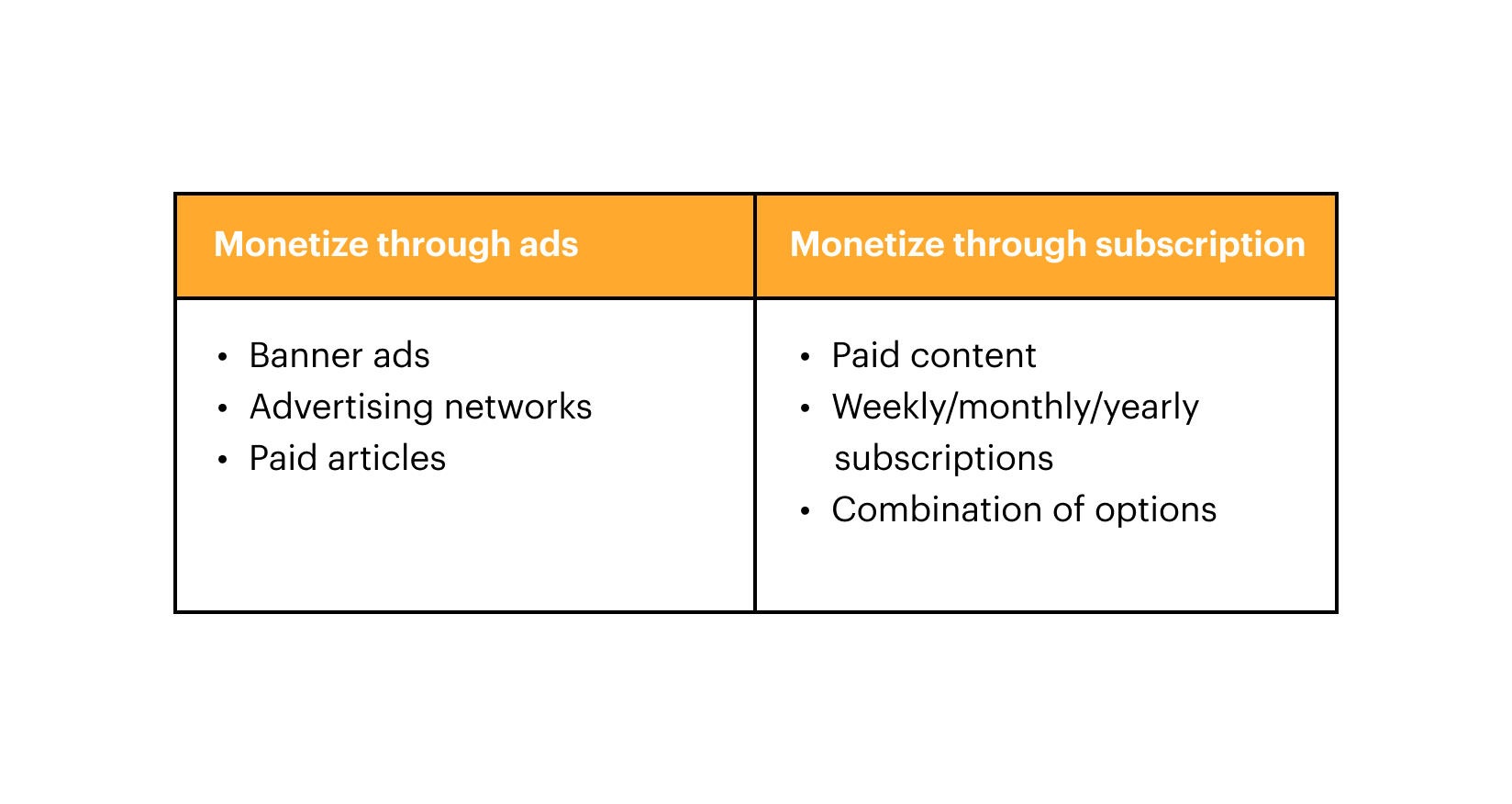
Free/Freemium app or SaaS monetization
The free model usually monetizes through advertising while freemium has paid features or paying for product options.
There are three main ways to generate revenue with these products:
- Attract users for 4, show something free plus some advertising, and sell advertising for 5.
- Attract for 4, give some features for free and some paid features for 6.
- Attract users for 4, sell them something for 5 — in this model the value of the product must be high to attract people and make profits. It also needs to be highly protected from copying by competitors.
Here we can go wild choosing monetization options because we can combine various scenarios from media and online store business models. What can customers get for free and what do they pay for, which features will be unlocked upon watching the ads, etc.
If you make the monetization combo more complex, it may lead to greater profits, if done wisely.
For example, while Microsoft products are simply available upon subscription, Google gives some parts of products for free. Their users get attached to them and then need to pay to unlock more features.
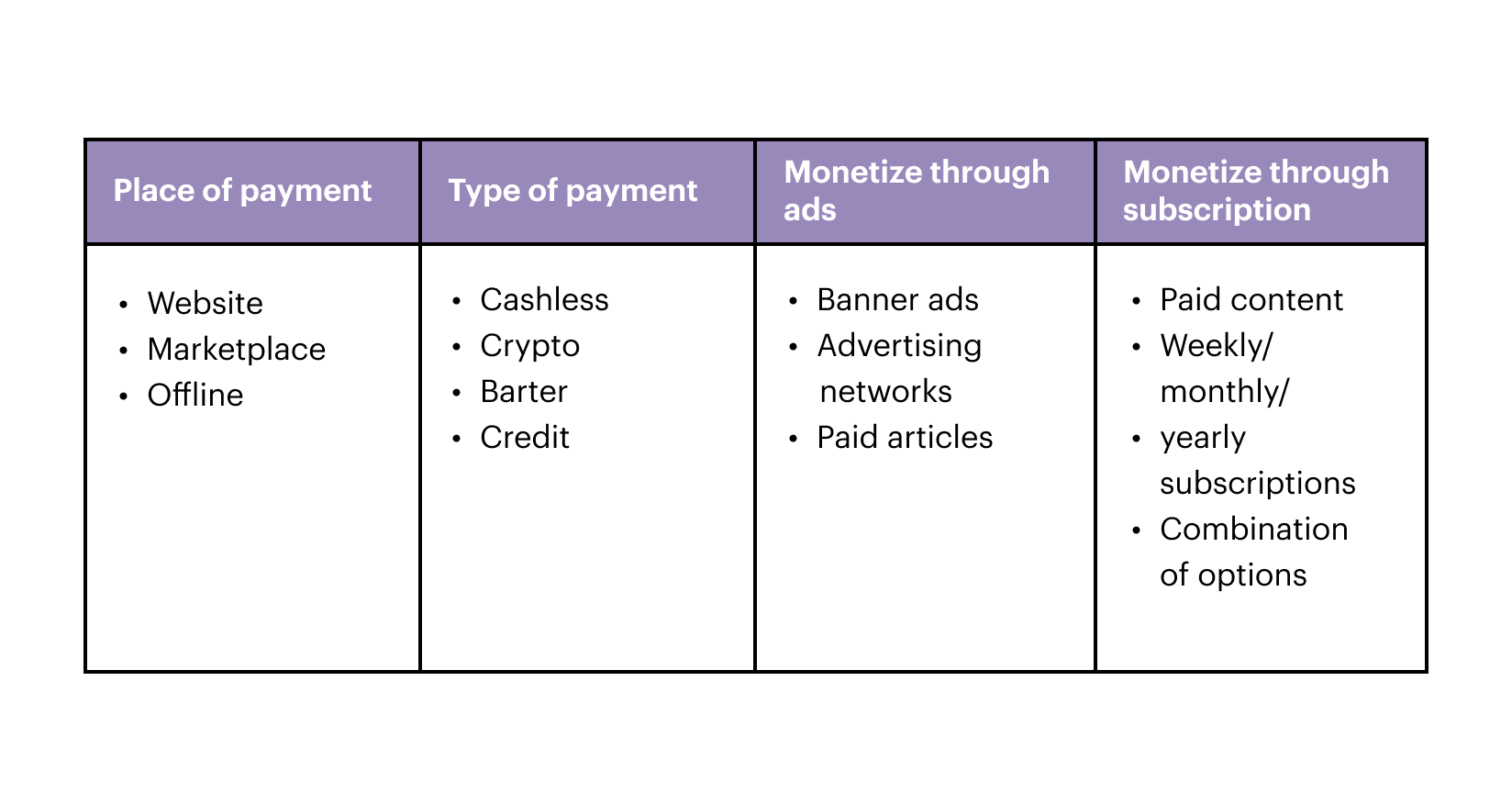
Still, you always need to remember that to monetize wisely you need to know the amount of money your business will generate from it.
For example — you’ve chosen ads but your product launches in a region where ads don’t work well and will be shown to a small part of the business. On the other hand, if your product is distributed worldwide, then the ads may work just fine.
The narrower the market, the fewer types of monetization are available for you.”
Quick “choose your monetization” checklist
Finding the right monetization strategy for your product and target market takes time and fine-tuning.
- Define your business model.
- Define your monetization strategy based on your business model. Remember, there can be more than one type.
- Experiment and combine various types of monetization to achieve better results!
- Calculate your revenue and expenses to track profit and see how you’re startup is growing.
Even if you’ve chosen wrong — don’t stop and throw your idea and product away, think of it as an experiment that got you one step closer to success.
As we said before, don’t rely on random luck — analyze your results and iterate your monetization model to grow profits.


